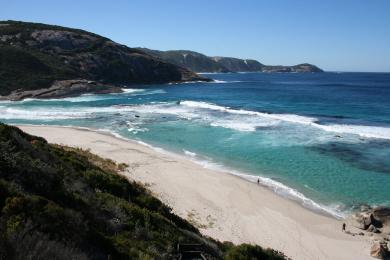Overview
Bull sharks are characterized by a broad, rounded snout, a stocky build, and a grey to olive-brown coloration. Their most distinctive feature is their wide, blunt head, which gives them their name. Unlike other requiem sharks, bull sharks have a shorter, more robust body and a more pronounced dorsal fin.
Commonly found in:
- United States (83 attacks)
- Australia (42 attacks)
- South Africa (20 attacks)
- France (17 attacks)
- Bahamas - 16 attacks
- Iran (10 attacks)
- Mozambique (10 attacks)
- Brazil (8 attacks)
- Iraq (5 attacks)
- New Caledonia (5 attacks)
- Tanzania (5 attacks)
- Costa Rica (3 attacks)
- Indonesia (3 attacks)
- Nicaragua (3 attacks)
- Thailand (3 attacks)
- Mexico (2 attacks)
- Venezuela (2 attacks)
- Curacao (1 attack)
- Mauritius (1 attack)
- Seychelles (1 attack)
- Tonga (1 attack)
Over the past 121 years, there have been 244 recorded attacks by bull sharks. Of these attacks, they have occurred at sea and at the following beaches:
Size and Weight
- Size: Males average between 7-7.5 feet when mature; females average between 7.5-8.5 feet when mature
- Weight: Males typically weigh 200-290 pounds; females typically weigh 290-500 pounds
- Swimming speed: Both sexes can reach speeds of up to 25 mph
Interaction with Humans
- Interaction with Humans: Aggressive, responsible for many unprovoked attacks
- Avoidance: Stay out of murky waters, avoid swimming in river mouths and estuaries
- Activity: Most active during dawn, dusk, and night
Lifespan and Diet
- Lifespan: Both males and females can live up to 32 years in the wild
- Diet: Opportunistic feeders, prey on fish, dolphins, and other sharks; hunt by ambush
Migratory Patterns
Bull sharks exhibit seasonal migration patterns. They typically start in warmer coastal waters near the equator during winter months. As temperatures rise in spring and summer, they move towards higher latitudes, often entering estuaries and freshwater systems. In the western Atlantic, they migrate from the Gulf of Mexico and Caribbean northward along the U.S. East Coast. In the eastern Pacific, they move from Central American waters to the coast of California. Some populations in Australia migrate between Queensland and New South Wales. Bull sharks also undertake long-distance movements in the Indian Ocean, traveling between South Africa and Mozambique.








